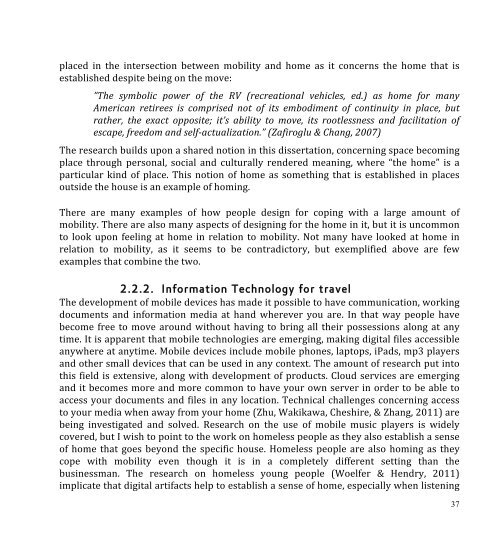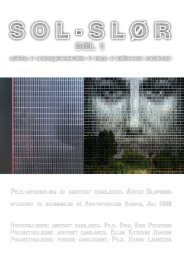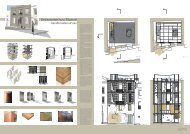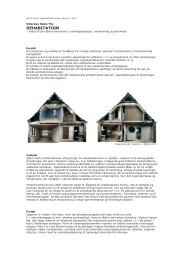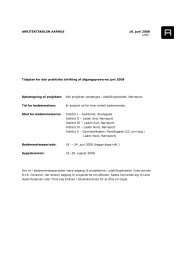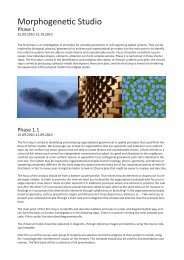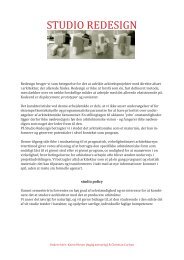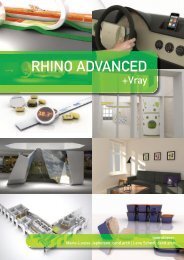-Tactics and Concepts for Highly Mobile People
-Tactics and Concepts for Highly Mobile People
-Tactics and Concepts for Highly Mobile People
You also want an ePaper? Increase the reach of your titles
YUMPU automatically turns print PDFs into web optimized ePapers that Google loves.
placed in the intersection between mobility <strong>and</strong> home as it concerns the home that is<br />
established despite being on the move:<br />
”The symbolic power of the RV (recreational vehicles, ed.) as home <strong>for</strong> many<br />
American retirees is comprised not of its embodiment of continuity in place, but<br />
rather, the exact opposite; it’s ability to move, its rootlessness <strong>and</strong> facilitation of<br />
escape, freedom <strong>and</strong> self-actualization.” (Zafiroglu & Chang, 2007)<br />
The research builds upon a shared notion in this dissertation, concerning space becoming<br />
place through personal, social <strong>and</strong> culturally rendered meaning, where “the home” is a<br />
particular kind of place. This notion of home as something that is established in places<br />
outside the house is an example of homing.<br />
There are many examples of how people design <strong>for</strong> coping with a large amount of<br />
mobility. There are also many aspects of designing <strong>for</strong> the home in it, but it is uncommon<br />
to look upon feeling at home in relation to mobility. Not many have looked at home in<br />
relation to mobility, as it seems to be contradictory, but exemplified above are few<br />
examples that combine the two.<br />
2.2.2. In<strong>for</strong>mation Technology <strong>for</strong> travel<br />
The development of mobile devices has made it possible to have communication, working<br />
documents <strong>and</strong> in<strong>for</strong>mation media at h<strong>and</strong> wherever you are. In that way people have<br />
become free to move around without having to bring all their possessions along at any<br />
time. It is apparent that mobile technologies are emerging, making digital files accessible<br />
anywhere at anytime. <strong>Mobile</strong> devices include mobile phones, laptops, iPads, mp3 players<br />
<strong>and</strong> other small devices that can be used in any context. The amount of research put into<br />
this field is extensive, along with development of products. Cloud services are emerging<br />
<strong>and</strong> it becomes more <strong>and</strong> more common to have your own server in order to be able to<br />
access your documents <strong>and</strong> files in any location. Technical challenges concerning access<br />
to your media when away from your home (Zhu, Wakikawa, Cheshire, & Zhang, 2011) are<br />
being investigated <strong>and</strong> solved. Research on the use of mobile music players is widely<br />
covered, but I wish to point to the work on homeless people as they also establish a sense<br />
of home that goes beyond the specific house. Homeless people are also homing as they<br />
cope with mobility even though it is in a completely different setting than the<br />
businessman. The research on homeless young people (Woelfer & Hendry, 2011)<br />
implicate that digital artifacts help to establish a sense of home, especially when listening<br />
37


